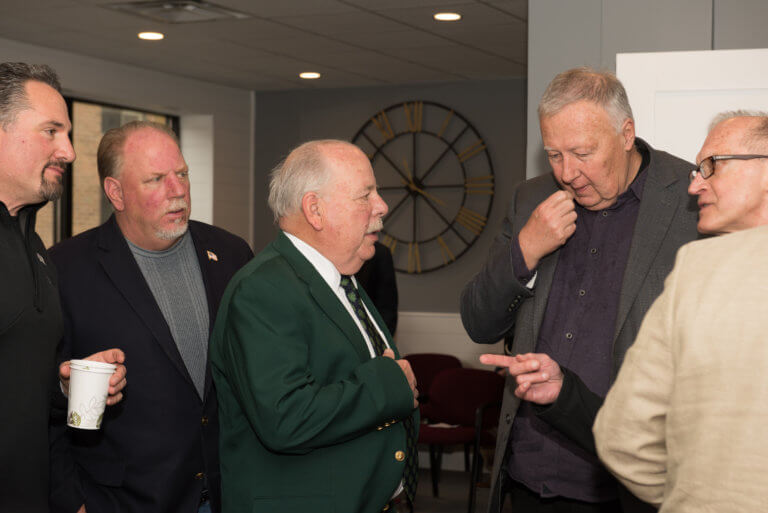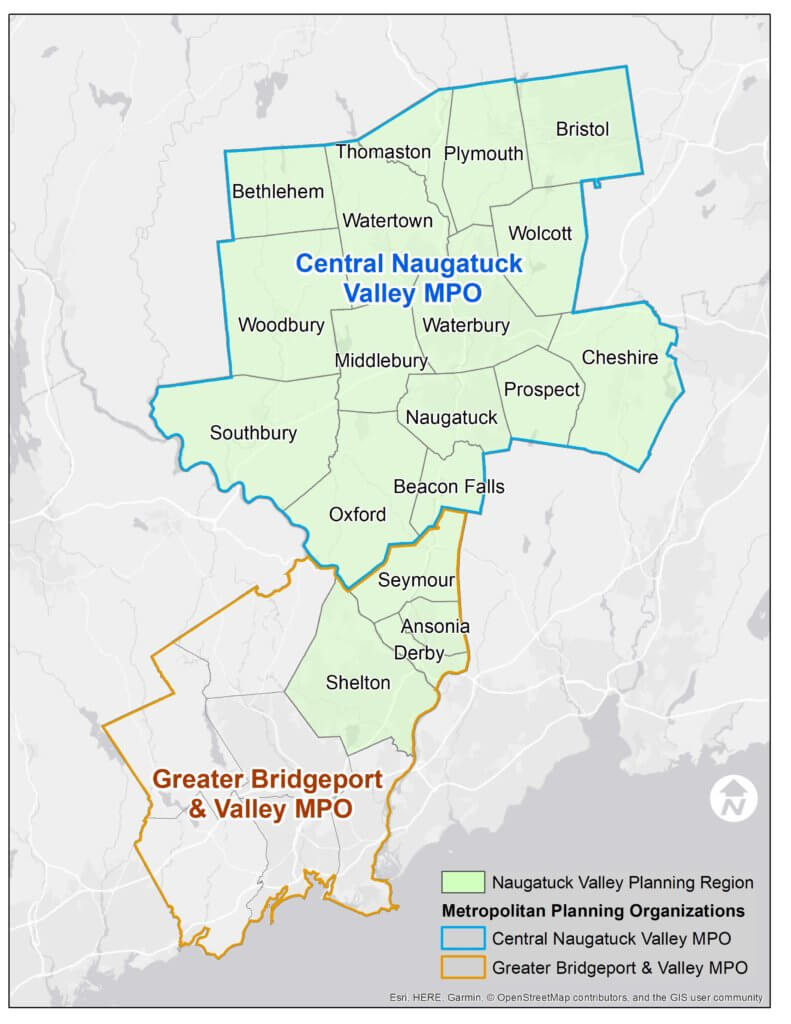What is an MPO and why do we have one?
Federal statute (23 CFR 450.310) requires a Metropolitan Planning Organization (MPO) be formed in any urbanized area with a population greater than 50,000 (US Census). The purpose of the MPO is to carry out the federal transportation planning process and provide a collaborative forum to discuss transportation issues on a regional basis.
Through the planning process, needed transportation improvements are identified and decisions on investments in the transportation are made. The federal planning process, broadly defined, requires MPOs to promote safe and efficient mobility that supports personal, freight, pedestrian, bicycle, and transit movement and by doing so fosters economic growth while considering resiliency and improved air quality. This process needs to be continuing, cooperative, and comprehensive.
To conduct the planning process, our MPOs work closely with the CTDOT, USDOT (FHWA and FTA), regional transit districts, municipalities, industry stakeholders, and the public. The MPOs are assigned the responsibility of completing and maintaining several core documents:
- The MPO must develop a transportation plan with a planning horizon of no less than 20 years, known as a Metropolitan Transportation Plan (MTP). The MTP includes an analysis of existing trends and issues and forecasts future needs. Included in the MTP is a list of all major programs and projects the MPO aims to implement or complete over the planning horizon and an accompanying financial plan. Transportation projects must first be included in the MTP before they can be considered for federal funding. MTPs must be updated every four years.
- The MPO must also prepare and maintain a short term program of projects anticipated to receive federal funding over a four-year period, known as the Transportation Improvement Program (TIP). The TIP must be fiscally constrained based on the expected funding over its four-year planning horizon. A transportation project must be included in the current TIP before federal funding can be obligated.
- The MPO develops a Unified Planning Work Program (UPWP) that lists and describes the planning tasks and activities to be undertaken by the MPO in support of its transportation improvement program. The multi-task planning program includes: data collection and analysis; multi-modal transportation planning; program management and administration; technical assistance; and program implementation.
- The plans, programs and projects of the MPO must contribute to the attainment of National Ambient Air Quality Standards. This process is referred to as Air Quality Conformity and is based on air quality assessment.
These documents outline how only those projects that have received local endorsement by the MPO Policy Board can receive federal transportation funding.
Our MPOs
The Naugatuck Valley planning region is split between two MPOs. The Central Naugatuck Valley Metropolitan Planning Organization (CNVMPO) comprises fifteen municipalities stretching north and south from Thomaston to Beacon Falls and east and west from Bristol to Southbury. The four lower Naugatuck Valley municipalities of Ansonia, Derby, Seymour, and Shelton lie within the Greater Bridgeport and Valley metropolitan planning area and are members of the GBVMPO. Through an agreement with the Connecticut Metropolitan Council of Governments, the primary host agency of the GBVMPO, the NVCOG conducts the federally required transportation planning process for these communities.
Municipal chief elected officials compose the CNVMPO Policy Board. The Chair of the NVCOG Board of Directors serves as the Chair of the CNVMPO Policy Board.

CNVMPO Policy Board Members
As of January 2024
| Beacon Falls | Gerard Smith | First Selectman |
| Bethlehem | Stephen Sordi | First Selectman |
| Bristol | Jeffrey Caggiano | Mayor |
| Cheshire | Sean M. Kimball | Town Manager |
| Middlebury | Edward St. John | First Selectman |
| Naugatuck | N. Warren “Pete” Hess | Mayor |
| Oxford | George Temple | First Selectman |
| Plymouth | Joseph Kilduff | Mayor |
| Prospect | Robert Chatfield | Mayor |
| Southbury | Jeffrey Manville | First Selectman |
| Thomaston | Edmond Mone | First Selectman |
| Waterbury | Paul Pernerewski | Mayor |
| Watertown | Mark A. Raimo | Town Manager |
| Wolcott | Thomas Dunn | Mayor |
| Woodbury | Barbara Perkinson | First Selectwoman |
GBVMPO Policy Board
Four NVCOG towns are members of the Greater Bridgeport and Valley MPO (GBVMPO). These towns include Ansonia, Derby, Seymour, and Shelton. The GBVMPO is hosted by the Connecticut Metropolitan Council of Governments and is supported by NVCOG staff. For more information on the GBVMPO Policy Board please visit their website.
Participate
The CNVMPO Policy Board holds monthly public meetings. The full schedule of meetings, along with the meeting agenda and important meeting documents, are available on the NVCOG calendar. To stay up to date on the Policy Board’s activities, sign up for our newsletter.
Meetings are live-streamed on the NVCOG YouTube Channel and recordings are stored there for public viewing.
Upcoming Meetings
NVCOG & CNVMPO Meeting (Tentative)
May 17 @ 10:00 am – 11:00 am EDTNVCOG & CNVMPO Meeting
June 21 @ 10:00 am – 11:00 am EDTPast Meeting Minutes
NVCOG & CNVMPO Meeting
April 19 @ 10:00 am – 11:00 am EDTNVCOG & CNVMPO Meeting
March 22 @ 10:00 am – 11:30 am EDTNVCOG & CNVMPO Meeting
February 16 @ 10:00 am – 11:00 am ESTNVCOG & CNVMPO Meeting
January 19 @ 10:00 am – 11:00 am EST
The chief elected offices of the four lower Naugatuck Valley municipalities are voting members of the GBVMPO Policy Board, as is the Chair of the Valley Transit District.
GBVMPO Policy Board Members from the Naugatuck Valley COG
As of January 2024
| Ansonia | David Cassetti | Mayor |
| Derby | Joseph DiMartino | Mayor |
| Seymour | Annamarie Drugonis | First Selectwoman |
| Shelton | Mark Lauretti | Mayor |
